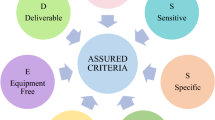Abstract
Detection of pathogens was demonstrated in a polydimethylsiloxane (PDMS)/glass microfluidic chip with which microbead-based immunoseparation platform and the bioluminescence technology were integrated. Escherichia coli (E. coli) O157:H7 was used as the model bacteria. The microchamber in microfluidic chip was filled with glass beads coated with antibodies which could capture specific organism, and the capture efficiency of the chip for the bacteria was about 91.75%∼95.62%. Then the concentration of bacteria was determined by detecting adenosine triphosphate (ATP) employing bioluminescence reaction of firefly luciferin-lucifera-ATP on chip. The method allowed reliable detection of E. coli O157:H7 concentrations from 3.2 × 101 cfu/μL to 3.2 × 105 cfu/μL within 20 min. This research demonstrated excellent reproducibility, stability, and specificity, and could accurately detect the pathogenic bacteria in food samples. The microfluidic chip and the equipments used in this method are easy to miniaturize, thus the method has great potential to be developed to a portable device for rapid detection of pathogens.





Similar content being viewed by others
Abbreviations
- E. coli :
-
Escherichia coli
- ATP:
-
adenosine triphosphate
- LB:
-
Luria-Bertani medium
- PCM:
-
plate count method
- PBS:
-
phosphate buffered saline
- cfu:
-
colony forming units
- PDMS:
-
polydimethylsiloxane
- RT:
-
room temperature
- DI:
-
deionized
- APTES:
-
(3-Aminopropyl) triethoxysilane
- SAMs:
-
self-assembled monolayers
- EDC:
-
1-ethyl-3-(3-dimethyl aminopropyl) carbodiimide
- sulfo-NHS:
-
sulfo-N-hydroxysuccinimide
- AO:
-
acridine orange
- SD:
-
standard deviation
- RLUs:
-
relative light units
- RSD:
-
relative standard deviation
References
G. Amagliani, G. Brandi, E. Omiccioli, A. Casiere, I.J. Bruce, M. Magnani, Food Microbiol. 21, 597 (2004). doi:10.1016/j.fm.2003.10.008
N. Bao, B. Jagadeesan, A.K. Bhunia, Y. Yao, C. Lu, J. Chromatogr. A 1181, 153 (2008)
Y. Bai, W.C. Huang, S.T. Yang, Biotechnol. Bioeng. 98, 328 (2007). doi:10.1002/bit.21429, 10.1016/j.chroma.2007.12.048
R. Firsten-Eden, L.A. Shelef, Int. J. Food Microbiol. 56, 231 (2000). doi:10.1016/S0168-1605(99)00207-X
Z. Fu, S. Rogelj, T.L. Kieft, Int. J. Food Microbiol. 99, 47 (2005). doi:10.1016/j.ijfoodmicro.2004.07.013
X. Guan, H.J. Zhang, Y.N. Bi, L. Zhang, D.L. Hao, J.Y. Wei, Acta Academiae Medicinae Militaris Tertiae 31, 887 (2009). doi:CNKI:SUN:DSDX.0.2009-10-006
F.Y.H. Lin, M. Sabri, J. Alirezaie, D. Li, P.M. Sherman, Clin. Diagn. Lab. Immunol. 12, 418 (2005). doi:10.1128/CDLI.12.3.418-425.2005
N.Y. Lee, Y. Yang, Y.S. Kim, S. Park, Bull. Korean Chem. Soc. 27, 479 (2006)
M. Mujika, S. Aranaa, E. Castaño, M. Tijero, R. Vilares, J.M. Ruano-López, A. Cruz, L. Sainz, J. Berganza, Biosens. Bioelectron. 24, 1253 (2009). doi:10.1016/j.bios.2008.07.024
G. Moore, C. Griffith, Int. J. Environ. Health 12, 317 (2002). doi:10.1080/0960312021000056429
J. Niza-Ribeiro, A.C. Louzãb, P. Santos, M. Lima, Food Control 3, 209 (2000). doi:10.1016/S0956-7135(99)00101-2
S. Seshadri, T. Han, V. Krumins, D.E. Fennell, G. Mainelis, J. Aerosol. Sci. 34, 405 (2009). doi:10.1016/j.jaerosci.2008.10.002
A.M. Sewell, D.W. Warburton, A. Boville, E.F. Daley, K. Mullen, Int. J. Food Microbiol. 81, 123 (2003). doi:10.1016/S0168-1605(02)00221-0
L.C. Shriver-Lake, S. Turner, C.R. Taitt, Analytica. Chimica. Acta. 584, 66 (2007). doi:10.1016/j.aca.2006.11.021
J.C. Stachowiak, E.E. Shugard, B.P. Mosier, R.F. Renzi, P.F. Caton, S.M. Ferko, J.L. Van de Vreugde, D.D. Yee, B.L. Haroldsen, V.A. VanderNoot, Anal. Chem. 79, 5763 (2007). doi:10.1021/ac070567z
A. Subramanian, J. Irudayaraj, T. Ryan, Biosens. Bioelectron. 21, 998 (2006). doi:10.1016/j.bios.2005.03.007
X.L. Su, Y. Li, Anal. Chem. 76, 4806 (2004). doi:10.1021/ac049442+
Y.C. Wang, J. Han, Lap Chip. 8, 392 (2008). doi:10.1039/b717220f
N. Xia, T.P. Hunt, B.T. Mayers, E. Alsberg, G.M. Whitesides, R.M. Westervelt, D.E. Ingber, Biomed. Microdevices 8, 299 (2006). doi:10.1007/s10544-006-0033-0
E. Yacoub-George, W. Hell, L. Meixner, F. Wenninger, K. Bock, P. Lindner, H. Wolf, T. Kloth, K.A. Feller, Biosens. Bioelectron. 22, 1368 (2007). doi:10.1016/j.bios.2006.06.003
L. Yang, P.P. Banada, M.R. Chatni, K.S. Lim, A.K. Bhunia, M. Ladisch, R. Bashir, Lab Chip. 6, 896 (2006). doi:10.1039/b607061m
H. Yu, J.G. Bruno, Appl. Environ. Microbiol. 62, 587 (1996). doi:0099-2240/96/$04.0010
H. Zhang, X. Yang, K. Wang, W. Tan, H. Li, X. Zuo, J. Wen, Biosens. Bioelectron. 23, 945 (2007). doi:10.1016/j.bios.2007.09.012
Acknowledgements
This work was supported by funds from the Research Project of “Eleventh Five-year Plan” for Medical Science Development of the People’s Liberation Army(06MB248). The authors gratefully acknowledge Department of Clinical Microbiology and Immunoloy (College of Medical Laboratory Science, Third Military Medical University, Chongqing, China) for providing pathogens.
Author information
Authors and Affiliations
Corresponding author
Rights and permissions
About this article
Cite this article
Guan, X., Zhang, Hj., Bi, Yn. et al. Rapid detection of pathogens using antibody-coated microbeads with bioluminescence in microfluidic chips. Biomed Microdevices 12, 683–691 (2010). https://doi.org/10.1007/s10544-010-9421-6
Published:
Issue Date:
DOI: https://doi.org/10.1007/s10544-010-9421-6




